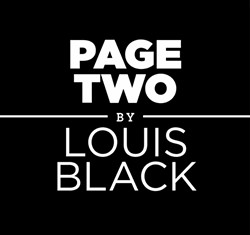Page Two
North by Northeast introduces club-hopping to Toronto.
By Louis Black, Fri., June 23, 2000

In Austin, when SXSW introduced wristbands (in its first incarnation, I think, it was a card), the audience understood them right away. Club-hopping was the way to go out and hear music in Austin. You might have started at Raul's then gone to the Broken Spoke only to end up at Antone's. Change the names of the clubs and you realize that over the decades, the secret genius of Austin music has been the clubs and the audience. One provides a rich range of music, and the other is hungry for diversity. The punk crowd went to country clubs, the rockers and blues musicians attended folk shows, and everybody went to Antone's. I have no idea what it's like now, but in the late Eighties, a pass good for all the bands at all the clubs simply went along with the way Austinites usually listened to music.
The first couple of times SXSW ventured out of the city on different events, we were astonished at what a hard sell wristbands were. In most other cities, it seems, certain crowds attend certain clubs, and that's where they stay all night.
In Toronto, it was rough. Audiences came out for shows, but they tended to stay in one club. If a club did well, this was great. If a club didn't do well, there was no continuing crowd of wandering random music tasters to fill it up. Which sucked. This year, you could see they got it. There were more wristbands than ever on the street, and people weren't using them just to get into one show an evening. Instead, the crowds flowed from club to club, with almost no venues complaining about sparse attendance. Sitting there on Queen Street, enjoying the feel of the city and the event, I thought back to those days in Austin. Before the Chronicle and SXSW, back when the question wasn't whether or not we were going out but which shows at which clubs we couldn't miss that evening.
The almost wacky weather of the last couple of years, combined with Austin's explosive growth, makes daily life almost surreal. At times, I think I'm trapped in a Fleischer Brothers cartoon. SXSW managing director Roland Swenson was talking to me the other day, commenting on how weird it was to drive up Lamar now, how many new buildings there are and how many old buildings are gone. It's not just how much things have changed but also how much construction is either going on or being announced. If the street looks different now, what will it look like in a few years? As we drove along, he commented on how every empty lot in the inner city was being built upon. The city we live in is changing, seemingly on a daily basis. The weather compounds the impact of these changes. The long drought runs, the lack of winter, the disappearance of any freeze accentuates the weirdness of waking up each morning in a city that seems to have mutated a little more during the night.
I was standing outside, leaning against a building, watching a cowboy walk across a weed-covered field with the wind almost blowing off his hat. Well, he looked like a cowboy. Smoking a cigarette, he got into a pickup truck and drove away. Behind me, the traffic groaned on I-35 -- around me, everywhere, there were cars. I started thinking it was time for a car trip through small Texas towns to wide-open, empty spaces.
The Austin Chronicle "Best of Austin 2000" ballot runs for the last time in this issue. Monday, June 26, is the deadline. You can fill out the ballot in this issue (as little as one category or as many as you want), or you can vote online at auschron.com/feedback/bestof/. The results will appear in September. The "Best of" poll is a place where you, the reader, create the content. Please vote. Let your voice be heard about this city we live in, especially as it changes faster than the naked eye can see.








